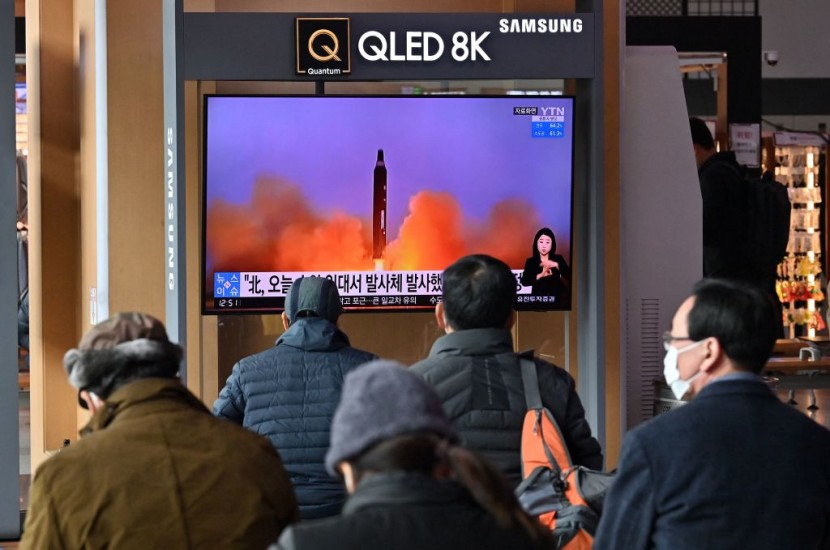
On Thursday, North Korea launched a long-range missile at its highest altitude ever, signaling a complete return to its saber-rattling days and a crucial milestone in its ambition to perfect the nuclear weapons program that has declared it an unlawful state.
The missile, which analysts think is capable of hitting the whole United States, adds to President Joe Biden's foreign policy challenges, including Russia's conflict on Ukraine and discussions over Iran's nuclear program.
US Condemns North Korea's Latest Missile Test
The launch, North Korea's 12th this year, is the first long-range intercontinental ballistic missile test since 2017. The country tested two ICBMs, propelling the latest missile over 3,700 miles in the air on a lofted trajectory.
In a statement, White House press secretary Jen Psaki said the launch was "a flagrant violation of numerous UN Security Council resolutions" that "needlessly escalates tensions and risks undermining the security situation in the area."
However, with Biden in Europe rallying allies against Russia, it appears that the West is mostly oblivious to North Korea's continued advancements in ballistic missile technology, as per ABC News.
The latest ICBM test defied a long-standing ban on nuclear weapons-carrying long-range missiles. It has also demonstrated that recent South Korean efforts to reach out to North Korean leader Kim Jong Un for reconciliation have failed. North Korea's latest ICBM test, disguised as a satellite, took place in November 2017, and its sixth and last nuclear test took place two months before.
The North did not pretend that the ICBM that fell 670 miles distant in waters near Hokkaido's vast northern Japanese island was only a satellite this time. The removal of the satellite cover "speaks volumes about Pyongyang's perception that the Russia-Ukraine conflict and growing tensions between the US and China have distracted the US," according to Evans Revere, a former US ambassador to the United Nations.
North Korea's Missile Test Adds to Foreign Policy Crisis
The missile launch sounded the alarm throughout Japan, according to The Daily Beast. It was a "new class" of missile, according to Nobuo Kishi, Japan's defense minister, far more powerful than North Korea's Hwasong 15 missile released in 2017.
By shooting its newest version 3,850 miles into the stratosphere, North Korea demonstrated the Hwasong 17's long-range thrust, showcased in Pyongyang in October 2020 with multiple launchers.
Per NDTV, long-range missile and nuclear testing have been halted since Kim Jong Un met with then-US President Donald Trump for a dismal diplomacy session that ended in failure in 2019. On the other hand, North Korea vowed earlier this year to end a self-imposed moratorium on long-range and nuclear tests, and the US and South Korea warned Pyongyang earlier this month that it was prepared to fire an ICBM at maximum range.
North Korea has long desired an ICBM capable of carrying multiple warheads, according to Seoul and Washington, and has been testing the Hwasong-17 under the guise of creating a "reconnaissance satellite."
A test of the Hwasong-17 last week ended in disaster, with the rocket bursting in the skies over the capital shortly after takeoff. The North has tested three ICBMs, the most recent of which was in November 2017 and was assessed strong enough to reach the continental United States.








